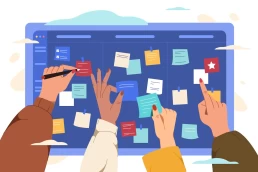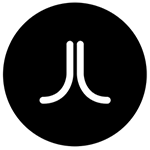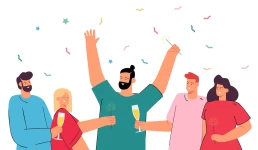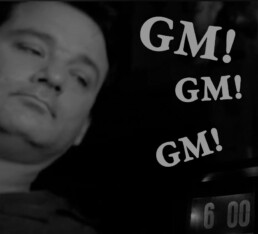New Business Updates with NFTs and Prints
Spicing things up around here!
I am thrilled to announce that I am now a part of the Aesthetes Marketplace, a curated platform dedicated to phygital artwork and NFTs. My first painting listed on the platform is titled ‘The Dawn Chorus’ and is part of my expanding collection, Uncivilization.
Uncivilization explores the paradoxes of contemporary life through the lens of human imperfection. By utilizing simplified colors and styles, these paintings invite viewers to reflect on the origins of our collective artistic heritage and contrast it with our seemingly advanced civilization. They portray how our everyday actions betray our unchanging nature, despite technological and societal progress.
Below are some updates I’ve made to different areas of my art business.
Painting
I have been keeping busy creating new oil paintings! The decision to pursue painting was not only a natural path for me but also an important one in the face of AI’s emergence. I believe it is crucial to create artwork that cannot be replicated by AI. Since my paintings are physical pieces of art with unique brushstrokes, replicating them would require AI to combine with machines, which is a significant challenge that remains years away. I will be sharing more of my thoughts on this in an upcoming blog post.
Frames
In addition to each painting, I have meticulously selected and created custom frames. While buyers have the freedom to choose their own frame, I believe the frames I have chosen best complement the artwork. The right frame has the power to elevate the art, and I go through an extensive process of creating mock-ups to envision the final result before having the frames custom-made.
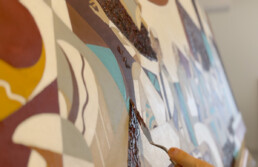
Certificate of Authenticity
The Certificates of Authenticity have been updated in terms of format and design since my last release, Clara. These updates provide better information related to the art and are tailored specifically for paintings.
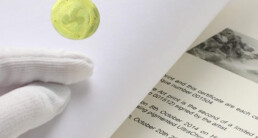
NFT Format
To me, an essential element of an NFT is the information it contains. Plagiarism is a prevalent issue in the crypto world, and I want to ensure that people are aware of what they are buying. To achieve this, I have included relevant QR codes on the NFTs that link to my website. This enables people to find all the official NFTs listed in the latest releases. They can search for the edition number of each print and find direct links to the corresponding NFTs. Simply put, if the NFT they are viewing on the open market has an edition number and is a copy of a JL NFT, visiting my website will reveal whether that edition number links to a different NFT, establishing which one is the original.
I have also taken measures to include my official usernames on the NFTs when it comes to Discord or Twitter. This prevents users from impersonating me in order to deceive or scam people out of their money. I am committed to providing potential buyers with as much protection as possible, and while I cannot prevent all incidents, I have taken these actions to minimize the potential risks.
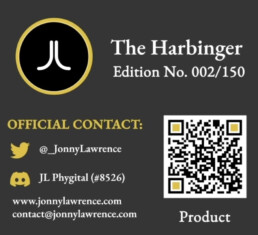
Redeemed Status
For each new art release of prints, I will list all the official NFTs that lead to the original artwork. By visiting the product page, you can easily identify which NFTs are available for redemption and which have already been redeemed. A non-redeemed status indicates that either someone has purchased the NFT but has not redeemed it yet, or it is still available for sale. On the other hand, a redeemed status signifies that someone has already used that NFT edition and redeemed the physical print associated with the same edition number.
New Print Supplier
I am now collaborating with a new printing company to ensure high-end prints. One aspect that excites me is the implementation of UV Embossing and special paper types such as Silver Paper, which contains actual silver pigmentation. Currently, I am introducing these features to the highest-grade prints and NFTs (Grade A).
Print Grades
I am introducing a new concept of classifying my NFTs into Grades. Each grade offers different print sizes and paper types. For example, Grade A will feature the largest size and the best printing techniques, while Grade C will have a smaller size and more basic paper. The prices will be more affordable for the lower-grade prints compared to the higher-grade ones.
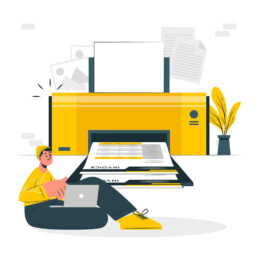
Included Shipping
Assuming the NFT has not depreciated in value by more than 5%, the shipping cost is included in the price when redeeming the NFT for a physical print. However, if the NFT has lost more than 5% of its value, the buyer will be responsible for paying the difference if they choose to redeem their print. The details regarding this policy have been added to the Terms and Conditions to ensure that shipping and production costs are covered.
Only Phygital Trades are Accepted through JL Trades
To trade a print, you must possess the official NFT with the corresponding edition number. The owner of the print must then carefully package and send it to the new owner. If the buyer wishes to remain anonymous to the seller, they will need to cover the cost of shipping for JL to send it to them. It is essential to keep your print in top condition if you plan to sell it in the future.

The Benefits of Web3 and The Merging Physical and Digital Products
NFTs (non-fungible tokens) can act as digital representations of physical products such as oil paintings, apparel, jewellery or anything else relevant to your creative business. NFTs allow artists to create digital representations of their physical products that can be sold and traded on the blockchain. This allows the artist to monetise their work in a new way and to reach new audiences in many new and interesting ways such as through the Metaverse.
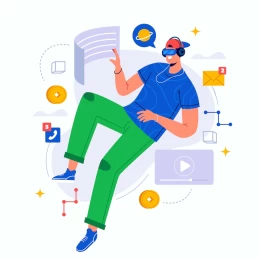
The Metaverse
The great thing about NFTs is how they can be displayed in the Metaverse, which is a virtual world that exists in the digital space. There are many Metaverse’s being built each offering different utilities to people that purchase an NFT from their projects such as a PFP (profile picture) NFT or virtual land which is offered to projects such as the xSpectar Project. It isn’t a central space and whether that is good or bad is up for debate. Many want the decentralisation aspect but we also want to be connected, yet there is a disconnection when Metaverse’s split into thousands of separate virtual worlds. So it can be important to focus on where you want your artwork to be displayed when looking for potential buyers.
In the Metaverse, NFTs can be featured in virtual galleries and exhibitions, allowing the artwork to be seen by a much wider audience than would be possible in the physical world helping to open up new opportunities.
As an artist, aside from the financial gain from making sales, much more importantly, we want people to view and enjoy our artwork. Artists who submit their artwork to galleries get the ability to share their work with visitors, and while this is fantastic, it is also extremely limiting in its reach, especially if your painting is bought up instantly and then stays forever on a private wall.
Virtual Reality
VR (Virtual Reality) headsets provide viewers with a completely immersive experience that allows them to move around the artwork, get up close to view details, and even interact with the artwork. With virtual reality, viewers can explore the artwork from any angle and move around the environment, creating a more engaging and realistic experience of the art. Similarly, 3D projection and stereoscopic 3D allow viewers to experience the artwork in three dimensions, providing a more lifelike experience than in Web2.
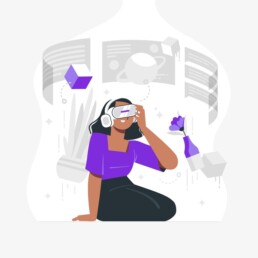
Augmented Reality
AR (Augmented Reality) apps bring art to life by allowing viewers to interact with the artwork in real time. For example, viewers can use an AR app to examine the artwork from different angles, add annotations, or even animate the artwork. AR apps also provide viewers with additional information about the artwork, such as the artist’s biography or the historical context.
Artists can be much more creative but it does mean that they need to put even more work into enticing an audience into viewing their artwork. Something that I’ve done to elevate the viewing experience is by adding animation over the top or re-editing it to go into AR so that buyers of my print can also view the animated version by holding their phones up to the print. Two good AR Apps to make your work more immersive are Artvive and EyeJack.
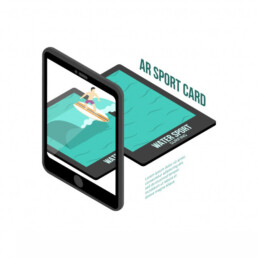
Virtual Showcasing
Web3 has also enabled new opportunities for artists to showcase their work in innovative ways. For example, artists can create virtual exhibitions, allowing them to reach a wider audience and generate more interest in their art. Additionally, artists can use Web3 to create interactive art installations that allow viewers to interact with the artwork in real-time.
If you are selling apparel you may be able to scan your items by taking multiple angles of the item and importing them into software, where you can create an exact 3D model replica. Achievable now on mobile, you can use an App called Polycam. To really benefit from this app there is a cost per year to render and use their cloud service but if you intend to use it often to create digital versions of your physical goods it might be an option to consider.
This digital replica can then be put into a Metaverse, so people wearing VR can see the item to scale and walk around it, maybe even pick it up. Then if they like it, they could pay for it within the virtual space and send you payment, settling almost instantly. You as an apparel business owner could then send that item to the buyer immediately as you know that their payment won’t bounce or get rejected and no middleman needed to come in between like Paypal taking fees. The only fee may be the gas fee of the transaction.
If you mint your NFTs on the Ethereum Blockchain, there are plenty of devs who have created well-designed galleries such as OnCyber using the latest Unreal Engine to fully connect and display your NFTs in hyperrealistic galleries. Unfortunately for other lesser-known or newer blockchains, these capabilities remain to be seen.
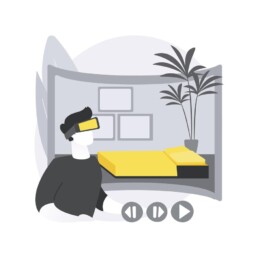
Physical Redemption
A Defi company such as FLR Finance, are looking to implement physical redemption of NFTs using their Ermis Protocol. It allows you to redeem and share your information, where the physical item will be distributed on-chain, remaining completely private between both the buyer and seller.
Physical Backed Tokens
There is also the PBT, short for Physical Backed Token, which is a brand new way of connecting an NFT with physical items, thanks to the Azuki project. Aside from the Web3 experience, it also allows your customers to have proof of authenticity verifiable via the blockchain, with full tracking of ownership history. The only issue currently, is that this technology is so new that it is only available on particular blockchains and not easily accessible.
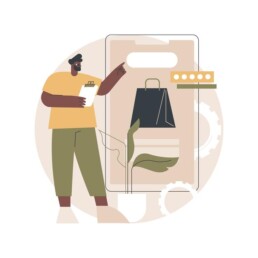
Envisioning the Future
Imagine you had a chair, and that chair had a built-in chip. And with that chip, you can scan it on your phone and see its full history of transactions and traded prices. And you put the digital version of that chair into the metaverse and had it for sale. You now have a piece of furniture that the world can view and possibly buy if an offer was made. And this can in theory be applied to almost anything, including your drawings, sculptures and paintings.
I am confident in saying that this is where our world is headed and people will favour items that can be authenticated in this way over items that can’t. I envision almost all of our personal belongings to be connected in this way, essentially converting illiquid assets into liquid assets.
Perhaps one day soon we will all be able to upload our physical goods and upload them into the metaverse, into our virtual shops, removing the distance barrier while letting people shop in a natural way as we all do in our nearby high street. We may also go full circle and end up working with reputable galleries in the Metaverse where yet again they take a large cut of the sales. Only this time, instead of it being sold to a local buyer, it is sold to a buyer on the other side of the world.

The Intrinsic Connection Between Art and Blockchain
The Intrinsic Connection Between Art and Blockchain
Art has always been a reflection of society, reflecting its values, beliefs, and experiences. It has also been a valuable commodity, with its worth being determined by its rarity, quality, and cultural significance. In recent years, technology has played a significant role in shaping the art world, with blockchain being one of the most disruptive technologies in the industry. In this article, we will explore the intrinsic connection between art and blockchain and how it is changing the way art is created, collected, and valued.
How Blockchain is Transforming the Art World
Blockchain technology provides a solution to the problems faced by the traditional art world. Its decentralised and secure nature makes it possible to verify the authenticity of a piece of art, ensuring that it is not a forgery or a copy. By using blockchain, artists and collectors can create a permanent and tamper-proof record of a work’s history, including its ownership and provenance. This creates a more transparent and trustworthy art world, where the value of a piece of art is determined by its true worth, rather than being artificially inflated or manipulated.


The Problems with the Traditional Art World
The traditional art world has faced several problems over the years, including authenticity, ownership, and valuation. Many works of art are copied, forged, or stolen, making it difficult for collectors to determine the true value of a piece. Additionally, the art world has been plagued by corruption, with individuals and institutions manipulating prices and hiding important information. This has resulted in a lack of transparency and a lack of trust, making it difficult for collectors to make informed decisions.
The Benefits of Blockchain for Artists
Blockchain technology provides several benefits for artists, including the ability to create and sell their work in a more secure and efficient manner. By using blockchain, artists can protect their work from being copied or stolen, and they can also retain control over the distribution and licensing of their work. This gives artists more control over their work and allows them to earn a fair return on their investment.
The Benefits of Blockchain for Collectors
Collectors also benefit from blockchain technology, as it makes it easier for them to buy and sell art in a secure and efficient manner. By using blockchain, collectors can verify the authenticity of a piece of art and can also see its history, including its ownership and provenance. This makes it easier for collectors to make informed decisions, and it also gives them the peace of mind that comes from knowing that they are buying a genuine work of art.
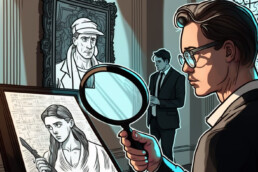
The Future of Art and Blockchain
The intrinsic connection between art and blockchain is just beginning to be explored, and it is clear that technology has the potential to revolutionise the art world. By creating a more transparent and secure art market, artists and collectors can work together to create a brighter future for the art world. In the coming years, we can expect to see continued growth and innovation in this area, as artists, collectors, and technology companies work together to create new and exciting ways to collect and enjoy art.
Conclusion
In conclusion, the intrinsic connection between art and blockchain is changing the way art is created, collected, and valued. By using blockchain technology, artists and collectors can work together to create a more transparent and secure art world, where the value of a piece of art is determined by its true worth, rather than being artificially inflated or manipulated. As the technology continues to evolve, we can expect to see new and exciting ways to collect and enjoy art, making it a more accessible and enjoyable experience for everyone.
Discover the Artistic Blend of Physical and Digital with Phygital Oil Paintings
Introduction
Oil paintings have been a timeless form of art for centuries, and with the advancement of technology, we now have a new type of oil painting that combines both physical and digital elements – phygital oil paintings. This new form of art merges the traditional medium of oil painting with the latest digital technologies to create stunning works of art that are both beautiful and innovative. In this article, we’ll explore what phygital oil paintings are, their unique features, and why they are becoming so popular among artists and art lovers alike.
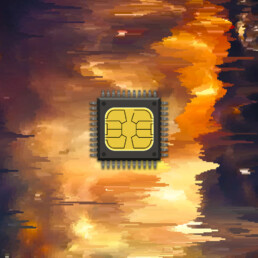
What are Phygital Oil Paintings?
Phygital oil paintings are a new form of art that combines traditional oil painting techniques with digital technology. This type of painting combines the physical elements of oil paint on canvas with digital elements such as augmented reality, 3D modeling, and animation. The result is a painting that not only looks beautiful on its own, but also comes to life through digital elements that add an extra layer of depth and interactivity.
There is also the possibility to combine the oil paintings with a digital token on the blockchain, and that digital representation could be an animated version of your physical painting, giving the piece an extra dimension.

Unique Features of Phygital Oil Paintings
Phygital oil paintings have several unique features that set them apart from traditional oil paintings. Firstly, they offer a new level of interactivity. By incorporating digital elements, these paintings can be experienced in a whole new way, making them a lot more engaging and interactive than traditional oil paintings. For example, an augmented reality element may allow the viewer to see different aspects of the painting when viewed from different angles, or to see elements of the painting move or change in response to the viewer’s movements.
Another unique feature of phygital oil paintings is their ability to create a sense of depth and dimensionality. By using 3D modeling and animation, artists can add depth and dimension to their paintings, making them feel more lifelike and realistic. This creates a new level of visual interest and impact, making these paintings truly stand out from traditional oil paintings.
You can now gain an unprecedented level of authenticity by using blockchain technology and smart contracts to own digital versions of artworks, such as with an NFT. Not only will this help to prevent fakes from circulating, but it also allows you to view the complete history of the painting.
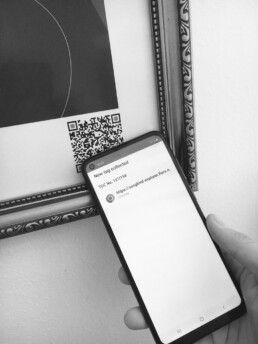
Why are Phygital Oil Paintings Becoming Popular?
Phygital oil paintings are becoming increasingly popular for a variety of reasons. Firstly, they offer a new and unique form of artistic expression. By combining traditional oil painting techniques with digital technology, artists are able to create works of art that are truly one-of-a-kind and that cannot be replicated. This is making phygital oil paintings a popular choice among artists who are looking for new and innovative ways to express themselves.
Another reason why phygital oil paintings are becoming popular is that they are accessible to a wider audience. By incorporating digital elements, these paintings can be viewed and appreciated by a larger audience, even those who may not have a deep appreciation for traditional oil paintings. This is making phygital oil paintings an attractive option for artists who want to reach a wider audience with their work.
The Process of Creating a Phygital Oil Painting
The process of creating a phygital oil painting involves several steps. Firstly, the artist must create the traditional oil painting, which can be done in a variety of styles and techniques. Once the traditional oil painting is complete, the artist will then add digital elements to the painting, such as augmented reality, 3D modeling, and animation.
This is where the artist’s creativity and technical skills come into play. They must carefully select the digital elements that will best enhance the traditional oil painting, and then carefully incorporate these elements into the painting. This process requires a high level of skill and attention to detail, as the digital elements must be integrated seamlessly into the painting in order to create a truly stunning work of art.

The Future of Phygital Art
As we progress further into the digital age, it is becoming increasingly likely that artwork with digital components will become the norm. With the emergence of NFTs as a way to represent physical art, it is entirely possible for people to possess artwork in their homes that can be viewed by anyone in the world, whether it be on the blockchain or in the metaverse.
It may only be a matter of time before you wake up one morning to find that someone has made an offer on the artwork you have proudly displayed in your living room.
My First Youtube Video in Years
Returning to Youtube
Hello everyone!
It’s been a long time since I first uploaded with the intention of being active and submitting content that is not made for somebody. Maybe some of you remember my Maker vs. Marker animation, but that was the last personal project that I uploaded to Youtube, all other animations were subsequent freelance work.
I’m so excited to announce that I’m finally launching my first video series of me recording my art creation process. I’m looking forward to sharing this journey with all of you and giving you a glimpse into my creative process inviting you all to a ‘fly on the wall’ experience.
The videos will be slow-paced, as I’m aiming to create an ASMR-style video series on Youtube. In addition to the sound of my tools and materials, I’ll also be sharing my thoughts at the moment and allowing my viewers to enter into my creative process with non-interruptive onscreen text in both English and Spanish. It will be a visual journal that documents my evolution as an artist, and I’m excited to share my journey with all of you.
I’m also happy to announce that, along with the art creation process, viewers can also expect to see plenty of coffee and a few furry friends. I’ve also got two dogs who I like to check on while I’m working, so you can look forward to seeing a few doggy cameos during the videos!
I’m looking forward to your feedback and the conversations we can have together as I continue to create and share my artwork. Thanks for joining me on this journey and I’m excited to get started!
– JL
Volviendo a Youtube
Hola a todos!
Ha pasado mucho tiempo desde que subí por primera vez con la intención de estar activo y enviar contenido que no está hecho para alguien. Tal vez algunos de ustedes recuerden mi animación Maker vs Marker, pero ese fue el último proyecto personal que subí a Youtube, todas las demás animaciones fueron trabajos independientes posteriores.
Estoy muy emocionada de anunciar que finalmente lanzaré mi primera serie de videos sobre mí grabando mi proceso de creación artística. Tengo muchas ganas de compartir este viaje con vosotros y darles un vistazo a mi proceso creativo invitándolos a todos a una experiencia como una mosca en la pared!
Los videos serán de ritmo lento, ya que mi objetivo es crear una serie de videos de estilo ASMR en Youtube. Además del sonido de mis herramientas y materiales, también compartiré mis pensamientos en este momento y permitiré que mis espectadores entren en mi proceso creativo con texto en pantalla sin interrupciones tanto en inglés como en español. Será un diario visual que documente mi evolución como artista y estoy emocionado de compartir mi viaje con todos ustedes.
También me complace anunciar que, junto con el proceso de creación de arte, los espectadores también pueden esperar ver mucho café y algunos amigos peludos. También tengo dos perros a los que me gusta vigilar mientras trabajo, así que puedes esperar ver algunos cameos de perros durante los videos!
Espero sus comentarios y las conversaciones que podamos tener juntos mientras continúo creando y compartiendo mi obra de arte. Gracias por acompañarme en este viaje y estoy ilusionado de comenzar!
-JL
Navigating and Starting an Art Business in Web3
A Brief Introduction
The rise of Web3 and Non-Fungible Tokens (NFTs) presents a unique set of difficulties for artists looking to move their careers into this space. Despite the many benefits that come with creating and selling NFTs, such as increased exposure and the ability to sell unique, one-of-a-kind digital assets, there are several challenges that artists must contend with.
Today I just wanted to share with you some of my thoughts on the challenges I have faced when trying to start an art business using Cryptocurrencies and NFTs.
I went full-time into creating my artwork and selling them with NFTs, with the intention of letting owners get physical prints since November 2020 but had prepared for it since the beginning of 2020 building out my website, business plan and producing artwork while I was still working full-time for an animation company.
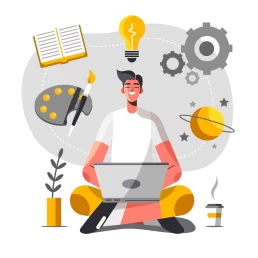
Receiving and Transferring Payment
Another challenge is being at the mercy of exchanges when it comes to off-ramping earnings into fiat currency and into a bank. Exchanges are the gatekeepers of cryptocurrencies, and artists must rely on them to convert their earnings into fiat currency. However, exchanges often have high fees and can freeze accounts, making it difficult for artists to access their earnings. But an artist must pay the amount of tax owed, so the longer the earnings are not put into the bank, the longer the risk exposure becomes.
I can’t emphasise enough the need for payment in a Stablecoin. In a perfect scenario, a customer can purchase the artwork in whatever crypto asset of their choosing, and the artist receives the currency of their choosing, with the marketplace handling the exchange of assets.
Receiving payment in a Stablecoin, which is pegged to a country’s currency, offers several benefits compared to receiving payment in a cryptocurrency that may be illiquid.
My advice would be to convert into fiat or a Stablecoin as soon as you can, and put the tax % and VAT you owe straight into your bank for your mental health and financial security.
- Stable Value: Stablecoins offer stable value compared to other cryptocurrencies which may have high price volatility. This stability is important for artists who need to have a predictable and consistent revenue stream.
- Liquidity: A Stablecoin that is pegged to a country's currency is more liquid, meaning it can be easily converted to cash or other cryptocurrencies, which is not always possible with an illiquid cryptocurrency.
- Wider Acceptance: Stablecoins are widely accepted as a means of payment, allowing artists to easily receive payment and use it to pay their bills and expenses.
- Ease of Use: Stablecoins can be easily used by anyone with a smartphone and a wallet, making them accessible to a wider range of artists and art buyers, even those without a background in finance.
Receiving payment in a Stablecoin based on their country’s currency can greatly improve the adoption of crypto for artists by providing a secure, stable and easily accessible means of payment.
I held a crypto asset that used a form of passive earning through weekly rewards. Once the value of the cryptocurrencies crashed I lost A LOT of money. However I still was required to pay for the tax of the NFT sales and be put into the highest tax bracket regardless of this massive financial impact.
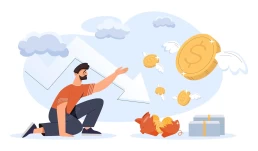
Invoices
Another huge problem is the lack of automated invoices when an NFT purchase is made also presents a challenge for artists. This means that artists must manually keep track of sales and create invoices themselves, which can be time-consuming and prone to error. If we are to utilise NFTs and crypto for their benefit of fast settlement time, then we need smart contracts that have a built-in function whereby an invoice can be automatically generated and sent to the artist.
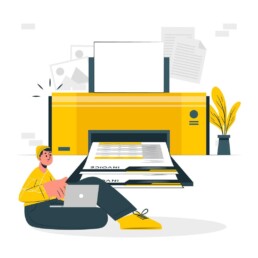
Gas Fees
Gas fees for creating or selling NFTs can also be expensive, which can eat into an artist’s profits. Additionally, there is a risk of losing assets by typing in the wrong cryptocurrency address, which can result in a permanent loss of funds.
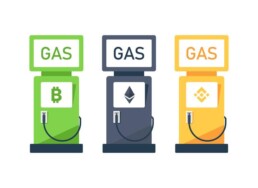
VAT & Taxation
Another huge problem is the lack of automated invoices when an NFT purchase is made also presents a challenge for artists. This means that artists must manually keep track of sales and create invoices themselves, which can be time-consuming and prone to error. If we are to utilise NFTs and crypto for their benefit of fast settlement time, then we need smart contracts that have a built-in function whereby an invoice can be automatically generated and sent to the artist.
Koinly is a useful website for sorting out the tax owed, but it doesn’t help when you need to connect a specific NFT sale to an invoice if you attach physical items with the sale. You will still need to find the specific sale attributed to the buyer and manually apply it and convert it to the fiat equivalent at the time of sale. I realise that crypto laws vary widely per country so be sure to know what laws apply to your business.
You should also never assume that because it is crypto that you can evade taxes. Everything is recorded on the blockchain, so your entire tax history can be traced.
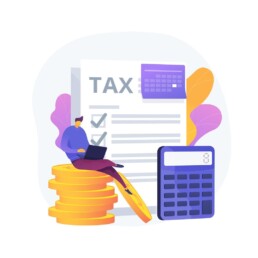
Lack of Regulatory Clarity
Turns out that it’s very expensive to innovate in this space.
The lack of regulatory clarity surrounding NFTs means that artists may need to pay a tax specialist or lawyer to navigate the complex tax laws to ensure they are in compliance with the laws. This can add an additional cost to the process and further slow down the process of creating and selling NFTs.
Despite the many benefits of NFTs, artists must contend with a number of difficulties when moving their careers into the Web3 and NFT space. From tax implications to exchange fees and the lack of regulatory clarity, these challenges can make the process of creating and selling NFTs more complex and time-consuming than traditional systems. It is important for an artist to carefully weigh the potential benefits and challenges before making the transition to selling artwork in the NFT space.
I have lost many thousands to tax lawyers who have used my earnings to fund their time to learn how to navigate the law and charging me for the tax advice as there is no where to go.
NFT Marketplaces
In addition, one of the main challenges faced by independent artists is the complexity of NFT marketplaces. With a plethora of platforms and a wide range of token standards, it can be difficult for independent artists to navigate and understand the NFT space. This can lead to confusion and uncertainty, making it difficult for independent artists to effectively showcase and sell their work.
My artwork is distributed amongst different blockchains, some have had NFT mints that I have burned but it still appears inside the marketplaces. Overall it just seems incredibly messy and difficult for an art collector to find your entire body of work if you have moved blockchain. I use my website as the central hub where all my NFTs can be discovered but not every artist has a website and it can be costly and requires constant maintenance.
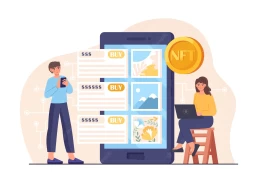
Displaying Work Amongst PFP (profile picture) Projects & Ai Generated Artwork
The dominance of PFP projects and AI-generated artwork has made it difficult for independent artists to compete and be recognised in the NFT market. PFP projects and AI-generated artwork have gained a significant following, attracting large amounts of investment and attention. This dominance also leads to a homogenisation of the NFT market, where similar themes and styles are prevalent, making it even more challenging for independent artists to stand out and showcase their unique perspectives and styles.
To address these challenges, NFT marketplaces need to improve their support for independent artists. This can be achieved by providing educational resources and support to help independent artists navigate the NFT space, creating opportunities for independent artists to showcase their work, and promoting a diverse and inclusive NFT market. Additionally, NFT marketplaces can also promote independent artists by highlighting their work and providing them with greater visibility, making it easier for them to connect with potential buyers and collectors.
This is for me an important one. When we think of crypto, we think of anonymity. So you don’t truly know who is buying your artwork. It is the same problem that exists today in the traditional art markets where galleries act as the middlemen and often is the case where the artist never gets to meet or know their buyer.
Final Thoughts
For me personally, it’s not been easy. While it is nice to explore new technology and enjoy some of the benefits, that does not mean that it comes with some heavy flaws, which will hopefully be ironed out over time.
If we want to see artists prosper on a more long-term basis and not based on the fluctuations of the crypto markets then we need a system that is much more defined, and better structured for business, removing risk and finding better ways to be discovered and connect with buyers.
If you’re an artist that is not too enthusiastic about using new technology or being at the forefront then I am not sure that this is for you – in the short term while there are improvements that need to be made.
Right now for me, it is a love/hate relationship because I love the potential it has but I hate the inefficiencies and risk that it brings. It has sent me on incredible highs from sales and incredible lows from the loss of assets through the volatility and not converting immediately into a fiat or Stablecoin.
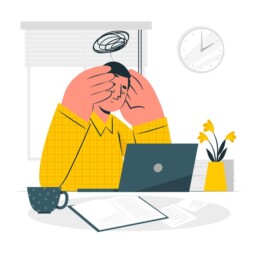
Regardless, for me it is a great feeling to be at the front of emerging technologies and interact with them. I believe it’s a great way to keep up to date with society as a whole and help shape the way our future looks by giving feedback to developers who build these new technologically advanced financial ecosystems using the bricks of our personal input.
Feel free to share this post it really helps and might help other artists know some of the hurdles that lie ahead if they’re just dipping their toes into Web3.
I also want to add that I will be reexamining my position on all of this as time goes on and will probably delve deeper into some of these topics in a separate post in more depth, noting also some of the pros of having worked in this space.
GM - The Overused Social Media Engagement Abbreviation For Artists
GM! GM! GM!
It’s 6 am. You wake up and go onto your Twitter. You scroll down your notifications to see how people have responded to your artwork on Twitter and you are met with endless GMs almost as repetitive as the alarm that woke you up. In an act of fed-up rage, you smash your phone into pieces on the bedside table.

Of course, I am over-exaggerating to convey a point. But, when I enter the platform in the morning and browse the art while sipping my coffee, I can’t help but feel like I am living a Groundhog Day where everyone has taken the overly enthusiastic role of Truman Burbank – the protagonist in The Truman Show with his phrase:
“Good Morning! In case I don’t see you. Good Afternoon, Good Evening and Good Night!”.
Go onto Twitter now and search for the phrase ‘GM’. What you will find is a phrase that has proliferated its way into the minds of many artists that use the platform. It’s comes mostly from artists that are involved in the Crypto & NFTs.
Social Engagement Rules the Roost
In the modern world, many artists use social media such as Twitter to market themselves and stay relevant. Unfortunately, this often leads to a lazy one-dimensional way of engagement, as demonstrated by the common phrase “GM” (short for “Good Morning”) being used as a post from one artist to another. This kind of interaction does little to create a meaningful connection between artists and does nothing to encourage the appreciation of the art itself. You might as well get create a Bot and get it to send out GM replies – or perhaps people are already doing that, who knows?!
It is understandable that artists may start to feel the social pressure to use these kinds of phrases to fit in and to maintain a social presence, however, this is a short-term solution that does not foster an environment of creative collaboration. Furthermore, this kind of engagement does not benefit either artist, as it fails to show appreciation for the art of the other, or initiate meaningful conversation.
Imagine this – you spend days, possibly weeks creating a new art piece. It’s full of meaning, you think it’s your best work yet. You’re proud of it and want to share it with the world. You upload on Twitter, and all you receive for your efforts is an abbreviated ‘Good Morning’. As artists we want people to interpret, discuss and interact with our work. In order for us to truly have a Good Morning we need a little bit more than a ‘GM’.
As a test, a while ago I went to Discord Server that is built for artists. Me and a friend decided to encourage thoughtful discussion on art related topics such as Ai so we wrote a couple paragraphs each. Not one artist joined in. The chat that followed was more GM’s. It felt quite surreal, you almost feel like a ghost. It’s something I imagine some artists feel when they put their soul into their work with no real acknowledgement of it – but hey! Have a good morning!
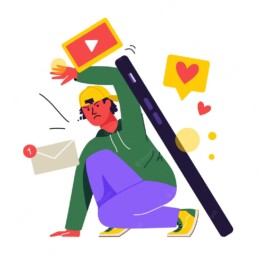
Opt for More Than Two Letters
Our bar for patience is evidently lowered the moment ‘GM’ is used as it becomes increasingly clear that we’re in a world where things are getting faster and more convenient to us. Advertisements went from minutes to mere seconds with the introduction of platforms such as Tik Tok. We no longer have time for one another, and us as artists have lost the ability to care for another artists work. So, how can we change this?
Whenever you see a piece that looks special, make an effort to leave a meaningful comment on the work and what you really enjoy about it. This could be a compliment, a comment on the meaning of the art, or a question about the artist’s creative process. These kinds of comments show genuine interest and appreciation for the art, and can lead to deeper discussions about the meaning of the art. Sure, it’s not as quick as a GM, but you took the time to look at the art. Saying GM is a dismissal to the artists work in what is essentially an act of blatant engagement farming.
Stop scrolling your feed looking for tweets with GM, only to respond with GM. It’s the same as Instagram likes. Eventually Instagram allowed users to hide the like count to reduce social media pressure. It’s clear that the same thing has passed onto Twitter, hunting for the most GMs to reply to it with the same two letters for higher social engagement.
The funny thing is, if it’s engagement figures you’re after – it technically works! But that is because everyone else is only going on to your tweets to say GM in response as an act of their own self interest, not yours. So what does engagement mean or what is it worth if its foundation is hollow? It’s much better and rewarding for both parties to build a solid foundation with other artists and that’s not done by saying GM.

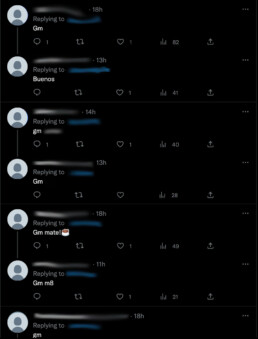
Add Some Spice to Your Morning
If you really can’t get away from using GM that’s OK! I understand if you’re an artist that you need to play the marketing game in order to survive. It does serve as a great icebreaker to get another user familiar with your presence, but that is all it should be used for if used as a stand alone comment. My suggestion is to use it but follow up with feedback to the work you are commenting on. Forget the words great, cool and awesome. Look at the work and explain to the artist what it did for you. Ask what methods they went through, or what tools they used to make it – ask what inspired them. Just showing interest will go a long way. If you’re in it for the art, and not for the money then this should come naturally to you – you’ll build better quality connections this way.

Connect to Collaborate and Become a Better Artist
By creating a more meaningful connection between another artist you open yourself up to new possibilities. Two artists can benefit from each other’s knowledge and experience, it’s not wasted time to ask questions. This kind of engagement can also lead to collaborations between artists, creating opportunities for both to create something even more amazing and possibly even more reach, which is what these artists seem to be after most.
Instead of just saying “GM”, artists should take the time to truly engage with each other’s art. This could be the start of an amazing creative journey that can benefit artists through real friendships, and that could lead to new and innovative art.
